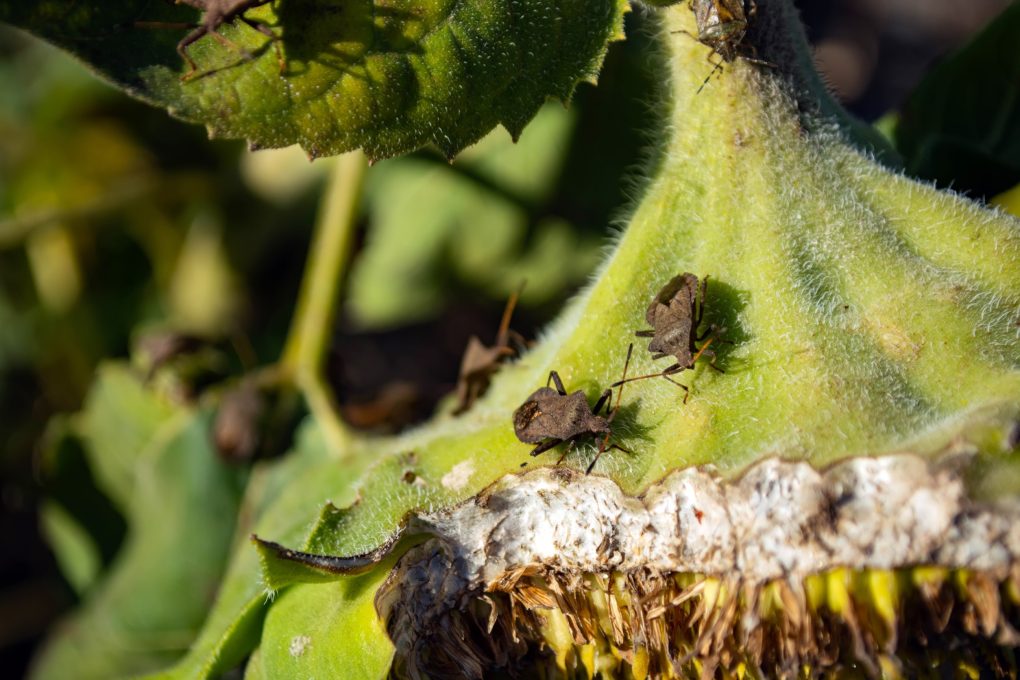What Kills Sunflowers: Common Causes and Prevention Tips
Sunflowers are a beautiful and popular addition to any garden, but they can also be a source of frustration for gardeners when they fail to thrive or die off unexpectedly. Various factors can kill sunflowers, including pests, diseases, extreme weather conditions, and improper care. Here are some common factors that can kill sunflowers:

- Posts: Sunflowers can be attacked by various pests, including aphids, caterpillars, and slugs. These pests can damage the plant’s leaves, stems, and flowers and kill the sunflower if left untreated.
- Diseases: Sunflowers can be affected by fungal diseases such as powdery mildew and rust, which can dilute the plant and reduce its overall health and productivity. Bacterial diseases such as wilt can also kill sunflowers.
- Extreme weather conditions: Sunflowers are generally hardy, but intense weather conditions such as high winds, heavy rain, and hail can damage or kill the plant. Frost and freezing temperatures can also kill sunflowers.
- Improper care: Sunflowers require proper care to grow and thrive, including regular watering, fertilization, and monitoring for pests and diseases. If plants are not properly cared for, they can become weaker and more vulnerable to pests and diseases.
- Herbicides: Some herbicides can be toxic to sunflowers and kill them if applied improperly.
Table of Contents
Common Sunflower Pests and Diseases

Sunflowers are a popular garden plant that can be affected by various pests and diseases. Here are some of the most common:
Bacterial Diseases
Bacterial diseases can cause wilting, yellowing, and stunting of sunflower plants. The most common bacterial diseases affecting sunflowers are:
- Bacterial leaf spot
- Bacterial stem rot
- Bacterial wilt
Based on observation, these diseases can be prevented by planting disease-resistant varieties and avoiding overhead watering, which can spread the bacteria. For example, if a plant is infected, it should be removed and destroyed to prevent the spread of the disease.
Fungal Diseases
Fungal diseases can cause leaf spots, powdery mildew, and stem rot in sunflowers. The most common fungal diseases affecting sunflowers are:
- Downy mildew
- White mold
- Sclerotinia head rot
These diseases can be prevented by planting disease-resistant varieties, providing good air circulation, and avoiding overhead watering. In addition, fungal diseases can be treated with fungicides, but prevention is the best approach.
Viral Diseases
Viral diseases can cause stunting, yellowing, and distorted growth in sunflowers. The most common viral diseases affecting sunflowers are:
- Beet curly top virus
- Cucumber mosaic virus
- Tobacco ringspot virus
There is no cure for viral diseases, so prevention is the best approach. Plant disease-resistant varieties and use insecticides to control the insects that spread the viruses.
Insect Pests
Insects can cause damage to sunflowers by feeding on the leaves, stems, and flowers. The most common insect pests affecting sunflowers are:
- Sunflower moth
- Seed weevils
- Grasshoppers
Insect pests can be controlled with insecticides, but prevention is the best approach. Plant disease-resistant varieties and use row covers to protect young plants from insects.
Environmental Factors That Can Kill Sunflowers

Watering Issues
Proper watering is vital for the health of sunflowers. Overwatering can result in root rot, while underwatering can cause the plant to wilt and eventually perish. To avoid these issues, it’s recommended to water sunflowers deeply and regularly, especially during dry spells. Nevertheless, avoiding excessive watering is essential, as it can also lead to problems.
Temperature Extremes
Sunflowers are hardy plants, but extreme temperatures can harm their health. High temperatures, especially if combined with drought, can cause sunflowers to wilt, dry out, and die. On the other hand, frost and freezing temperatures can damage the plant’s leaves and stem, leading to stunted growth and even death.
Soil Problems
The quality of the soil can greatly impact the health of sunflowers. According to North Carolina State University, too compacted soil can make it difficult for the plant’s roots to grow and absorb nutrients. Soil that is too acidic or alkaline can also be problematic, as it can prevent the plant from absorbing the necessary nutrients. Additionally, soil contaminated with chemicals or heavy metals can be toxic to sunflowers.
Sunflower Competition
Sunflowers need plenty of space to grow and thrive. They will contest for resources like water, nutrients, and sunlight if planted too close together. This can lead to stunted growth, weak stems, and a higher risk of disease and pest infestations. Therefore, it is important to give sunflowers enough space to grow and to avoid planting them near other plants that may compete for resources.
Human Intervention and Sunflower Death
Human intervention can cause sunflowers to die. Here are two sub-sections that discuss how herbicides, pesticides, and mechanical damage can lead to sunflower death.
Herbicides and Pesticides
Herbicides and pesticides are used to kill unwanted plants and insects. However, they can also harm sunflowers. For example, herbicides and pesticides can enter the soil and be absorbed by the sunflower roots. This can cause damage to the sunflower’s leaves and stem and even kill the plant. Therefore, reading and following the instructions on herbicides and pesticides carefully is important to avoid harming sunflowers.
Mechanical Damage
Mechanical damage can also cause sunflowers to die. This can include accidentally stepping on the plant, cutting the stem too close to the base, or damaging the roots while digging in the soil. Sunflowers are delicate plants and can be easily damaged. Therefore, it’s important to handle sunflowers carefully and avoid causing unnecessary damage.
In addition, sunflowers can be damaged by severe weather conditions, such as strong winds or heavy rain. Therefore, it’s important to protect sunflowers during extreme weather events to avoid damage to the plant.
